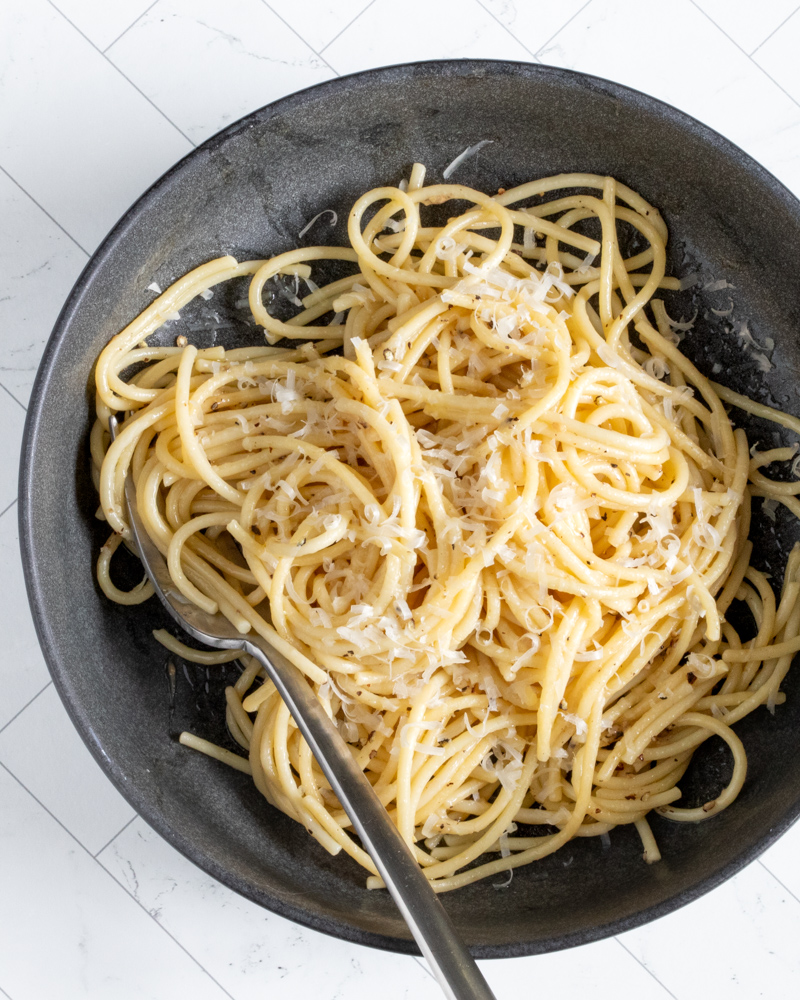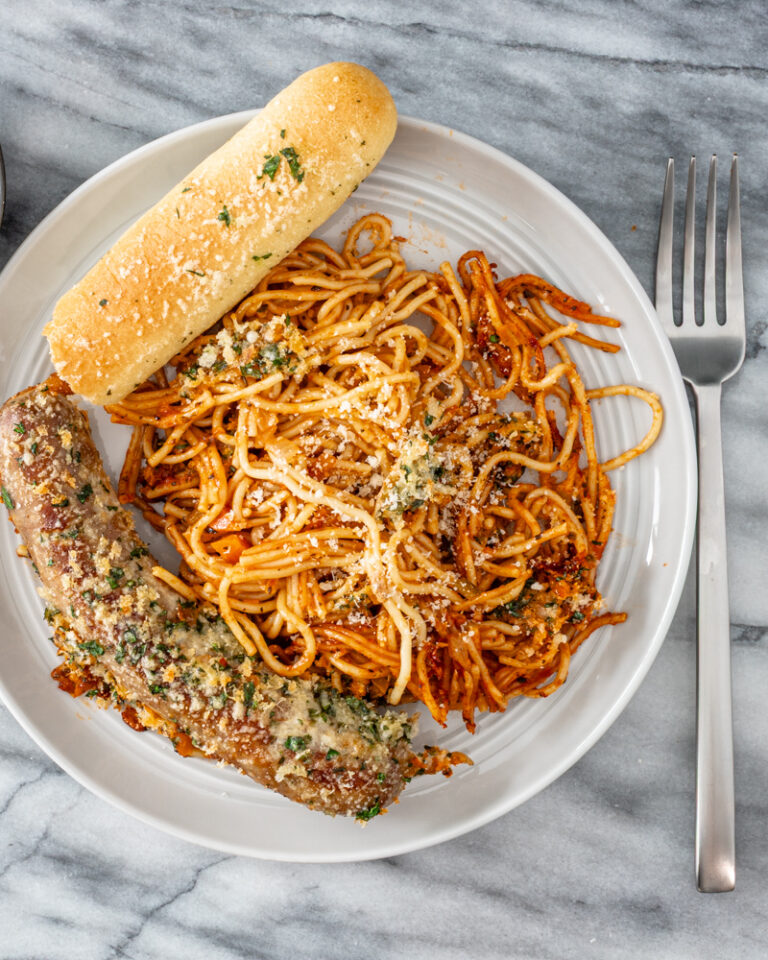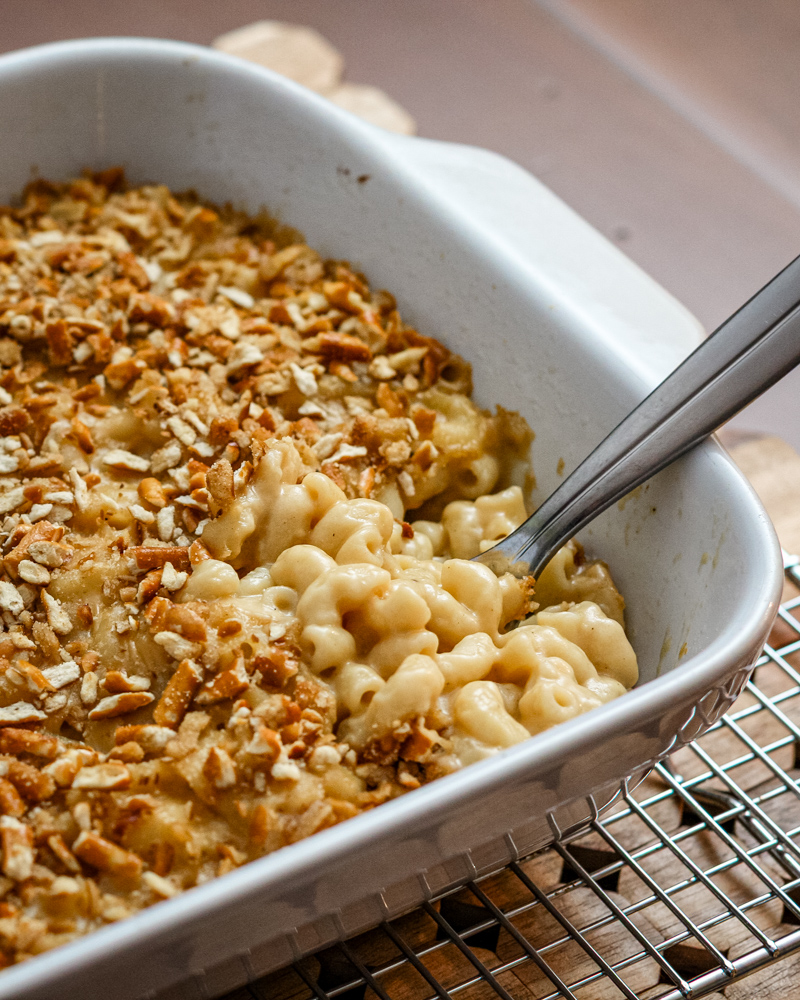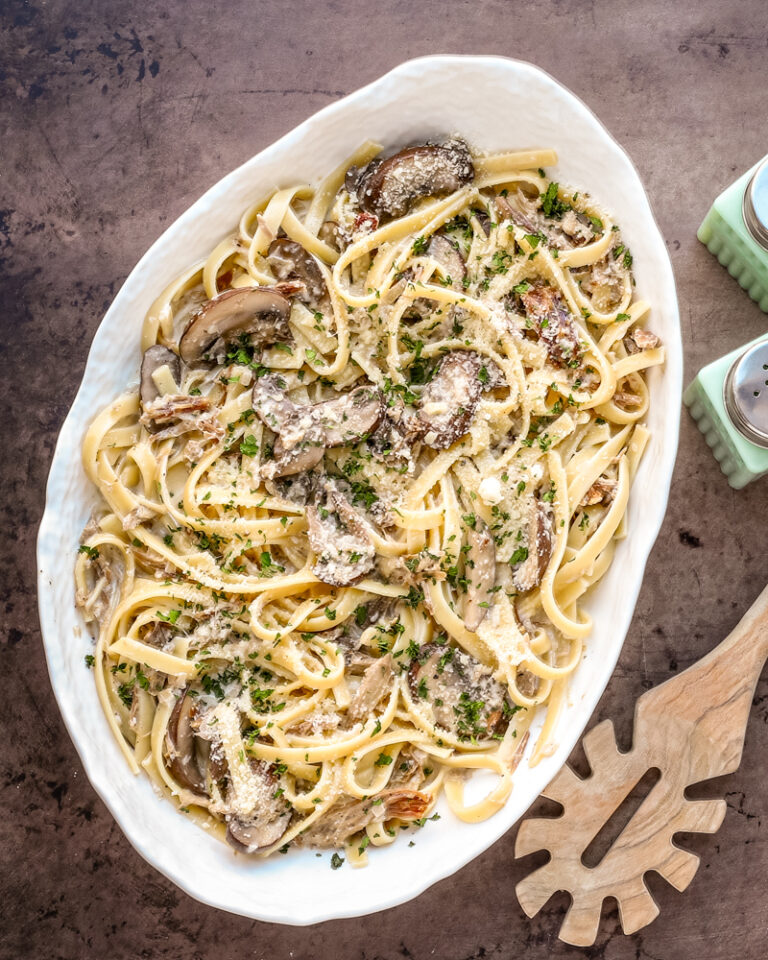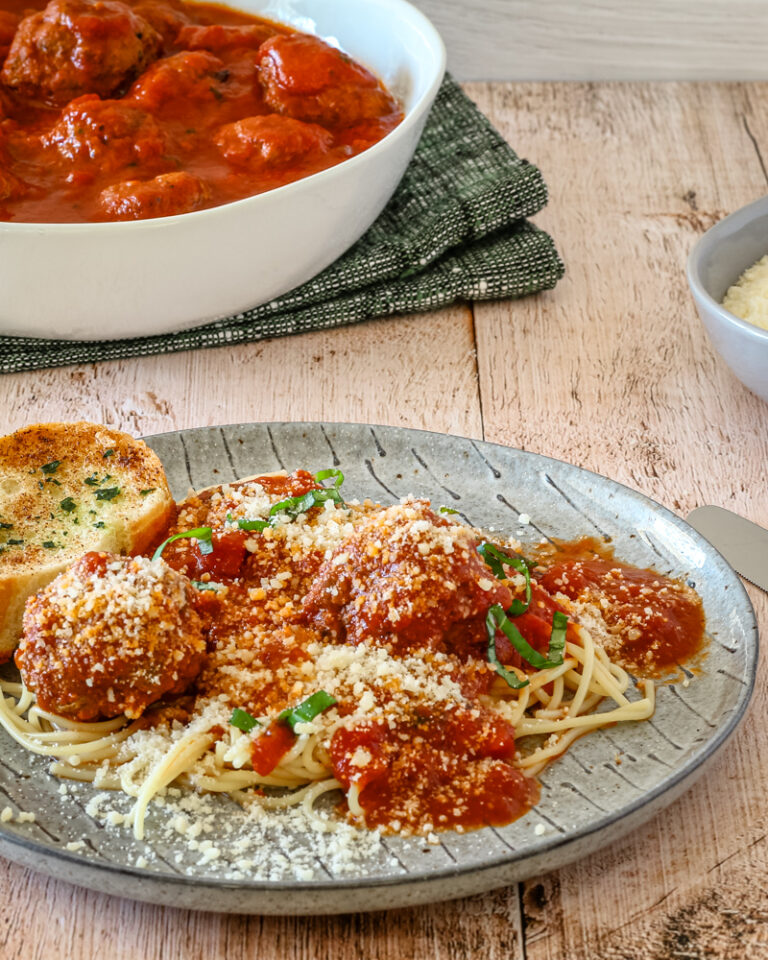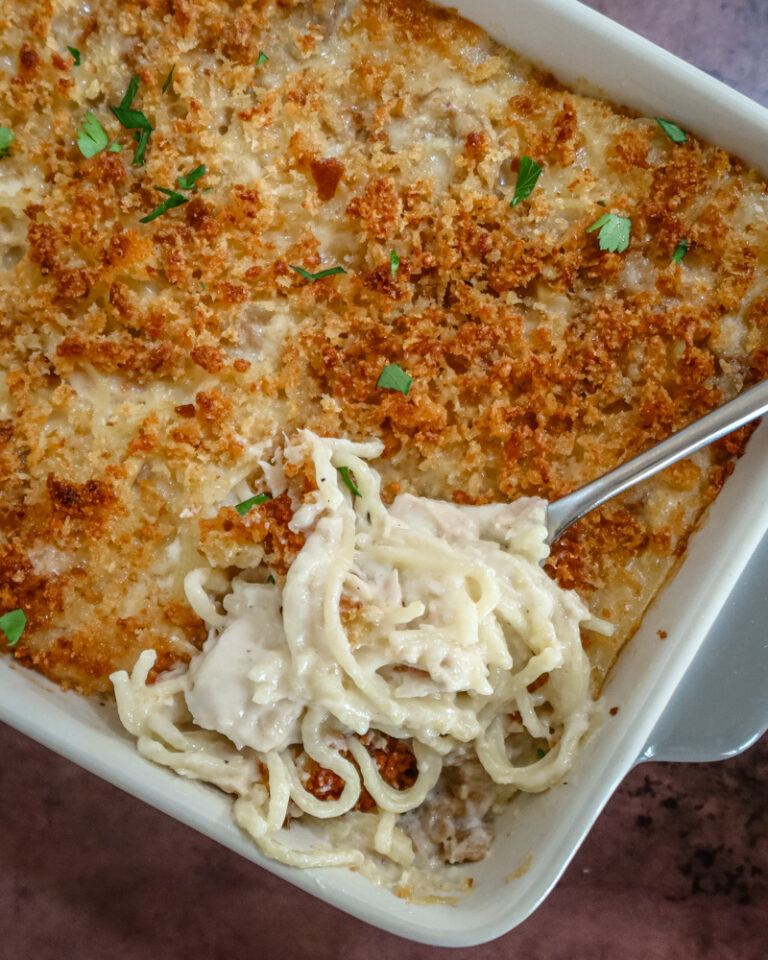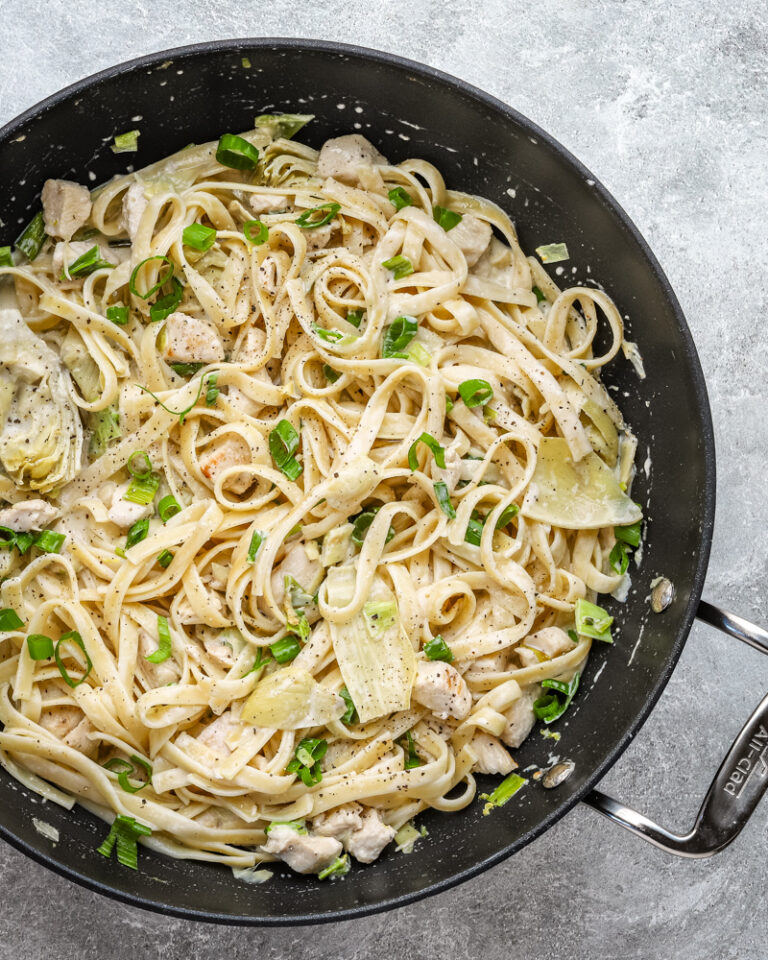Homemade Spaetzle
How to make spaetzle from scratch with this easy recipe. Sautéed or served plain, this German-style spaetzle is a versatile side dish!

Homemade spaetzle is remarkably easy and is a great substitute for pasta, rice, or potatoes. Prep is fast enough to make on a weeknight and pairs well with many main dishes. Add spaetzle to soups, sauté it, and serve it as a side with steaks or sausages, or enjoy it with cheese.
I usually make it ahead of time and sauté it just before serving. Sautéing gives the homemade spaetzle extra texture and savory, buttery flavor. But it’s excellent served plain and hot with butter. Sprinkled with herbs and cheese, you could make it a complete meal.
What You’ll Like About This Dish
- Quick and easy. You can make fresh spaetzle in under 30 minutes with pantry staples.
- Versatile side. Works with chicken, beef, seafood, or as a base for creamy sauces or soups.
- Customizable. Add herbs, cheese, or spices to suit your main dish or mood.
Ingredient Notes
- Salted water: A tablespoon of salt seasons the spaetzle as it cooks.
- Butter (for bowl): Prevents sticking when transferring cooked spaetzle.
- Flour: All-purpose flour is perfect—measure 255g by weight for accuracy.
- Fresh herbs: Parsley and chives are classic; reserve some for garnish.
- Salt: Regular table salt for seasoning the dough.
- Eggs: Four large eggs give richness and structure to the batter.
- Milk: Thins the dough to the right consistency. Add more if needed.
- Butter and cheese (for serving): Optional, but highly recommended for sautéed or dressed-up spaetzle.
Steps to Make Homemade Spaetzle
- Bring a large pot of salted water to a boil and butter a medium bowl for the cooked spaetzle.
- In a mixing bowl, whisk together the flour, salt, and most of the chopped herbs.
- In another bowl, whisk the eggs with the milk, then add to the flour mixture and stir until smooth.
- The batter should resemble thick pancake batter—adjust with more milk or flour if needed.
- Working in batches, scrape spoonfuls of batter through a spaetzle maker or colander into the boiling water.
- When the dumplings float to the top, scoop them out with a slotted spoon and transfer to the buttered bowl.
- Toss with a bit of butter and remaining herbs, or chill until ready to sauté.
Tips for Making Spaetzle
- If the batter is too thick to press through the holes, add a splash more milk.
- Use a spaetzle press, colander, or even a slotted spoon for shaping.
- Cook in batches to avoid crowding the pot.
- Toss freshly cooked spaetzle with butter right away to prevent sticking.
Recipe Variations
- Cheesy spaetzle. Add Parmesan or Gruyère after cooking and let it melt into the hot dumplings.
- Herb spaetzle. Use fresh thyme, dill, or tarragon in place of parsley and chives.
- Spiced version. Add a pinch of nutmeg or white pepper to the batter.
- Whole wheat. Substitute half of the all-purpose flour with whole wheat flour for a nuttier taste.
- Green spaetzle. Blend spinach or herbs into the milk before mixing for a colorful variation.
Serving Suggestions
- Serve with chicken paprikash, roast chicken, or creamy chicken dishes.
- Pair with pot roast, beef tips, or sausages for hearty comfort food.
- Add to brothy soups as a dumpling-style noodle.
- Top with butter and Parmesan as a simple side.
- Sauté until golden and serve with eggs or vegetables for a quick main.
How to Store and Reheat
Refrigerate: Store cooked spaetzle in a covered container for up to 4 days.
Freeze: Spread on a tray to freeze, then transfer to freezer bags. Use within 2 months.
To Reheat: Sauté in butter until hot and lightly browned, or reheat gently in the microwave with a bit of added butter.
Make-Ahead Tip
Make the spaetzle up to 2 days in advance. Refrigerate it after boiling, then sauté in butter just before serving for best texture and flavor.

Homemade Spaetzle
Ingredients
- 1 tablespoon salt, for the cooking water
- 1 teaspoon butter, for a bowl
- 2 cups flour, 255 grams
- 3 tablespoons fresh chopped parsley and chives, divided
- 1 teaspoon table salt
- 4 large eggs
- 2/3 cup milk, or more as needed
For Serving
- 1 tablespoon butter
- Optional: 1/3 cup Parmesan cheese
- Optional: 3 tablespoons butter, if sautéing
Instructions
- Fill a large pot with water and add 1 tablespoon of salt. Bring to a boil over high heat.
- Combine the flour, 2 tablespoons of the herbs, and salt in a large bowl and whisk to blend.
- Butter a medium bowl and set it aside.
- Add the eggs and milk to the flour mixture and whisk or stir until well blended. The batter should be the consistency of pancake batter, thick enough to form the spaetzle but loose enough to drop through the spaetzle tool or colander with a little urging. If it is too thin, add a bit more flour. If it is too thick, add a bit more milk.
- Place the spaetzle tool or colander over the boiling water and use a knife or bench scraper to scrape half of the dough through the holes and into the water. After about 2 minutes or until they rise to the top, scoop the spaetzle out with a skimmer or slotted spoon. Transfer them to the buttered bowl. They will look like tiny dumplings. Repeat with the remaining dough.
- Toss the hot spaetzle with 1 tablespoon of butter, the remaining herbs, and Parmesan cheese, if using.
How to Sauté Spaetzle
- Toss the hot spaetzle with 1 tablespoon of butter and omit the remaining herbs and Parmesan cheese. Refrigerate the spaetzle until you are ready to eat.
- About 5 to 10 minutes before serving time, melt 3 tablespoons of butter in a skillet over medium heat.
- When the butter is sizzling, add the spaetzle and increase the heat to medium-high. Cook, stirring and turning, until the spaetzle is lightly browned, about 4 to 7 minutes. If desired, toss with 1 to 2 tablespoons of fresh chopped herbs and 1/3 cup of Parmesan cheese.
Nutrition
Disclaimer:
Our nutritional information is based on a third-party application that analyzes the ingredients list to determine the values. The information is meant to be helpful, but should be considered an estimate. Values may differ depending on measurements, brands, serving variations, and database availability.


